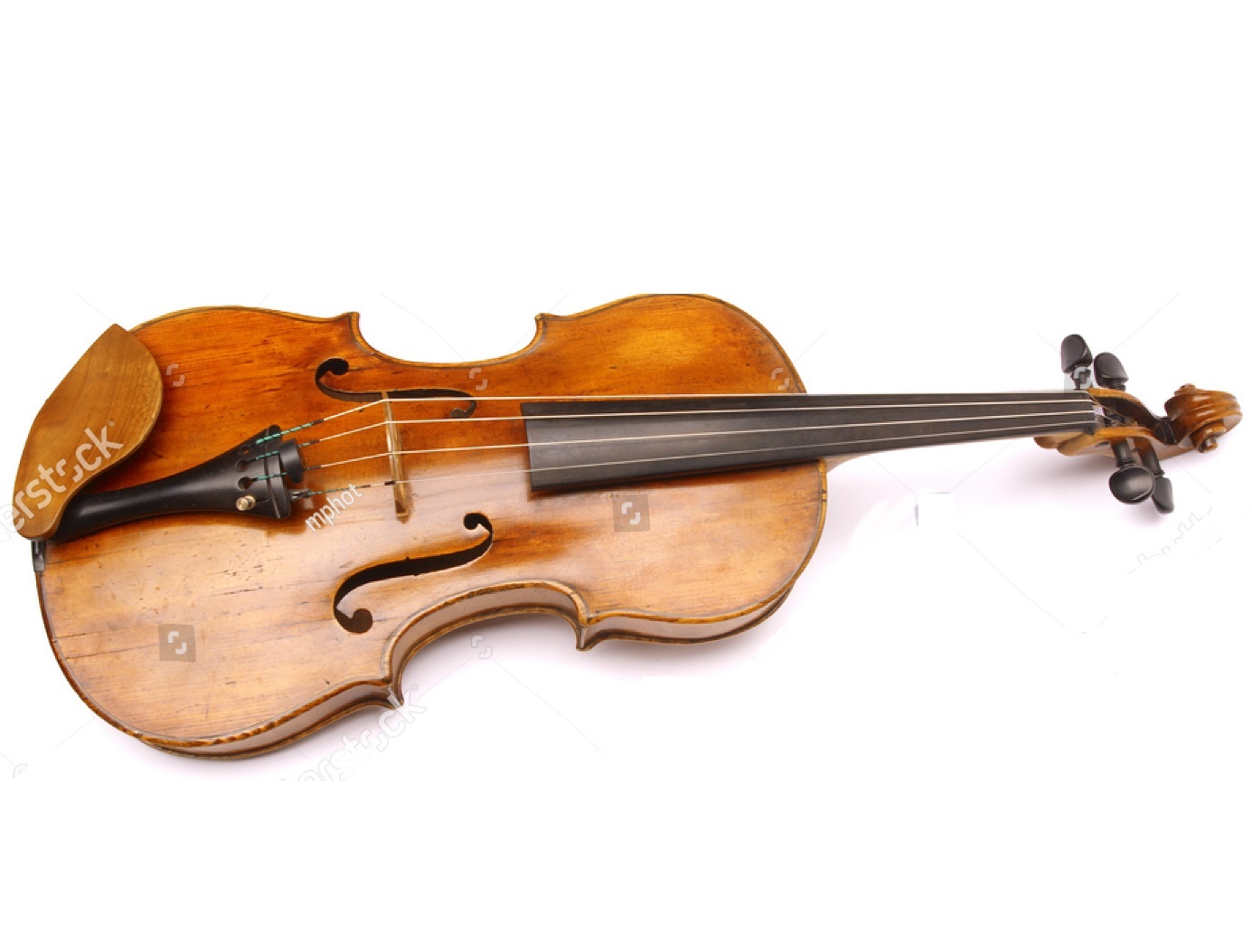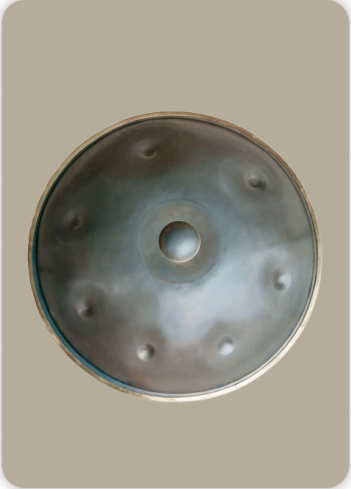Basolia
Bowed Instruments
Europe
Between 1001 and 1900 AD
Video
The basolia is a bowed string instrument traditionally used in Ukrainian and Polish folk music. It resembles the cello in appearance and sound but is often constructed with more rudimentary materials and a less refined finish. This instrument plays a crucial role in village ensembles, providing harmonic and rhythmic support. Typically, it has four strings, though variations exist, and it is played with a bow similar to that of a violin or cello.
Type of Instrument: The basolia belongs to the bowed string instrument family, categorized under chordophones. It is similar to the cello but has a more rustic construction, making it distinct from the well-polished instruments found in classical orchestras. Its primary function is to provide a bass foundation in folk ensembles, playing droning bass lines or simple harmonic accompaniments.
History
The basolia has its roots in Eastern Europe, particularly in Ukraine and Poland. It is believed to have emerged in the 17th or 18th century, though its exact origin remains debated. The instrument gained prominence in rural communities where professional orchestral instruments were inaccessible. It was a staple in village bands, often accompanying dances, religious ceremonies, and festive gatherings. Unlike the classical cello, the basolia was typically handcrafted by local artisans, leading to variations in size, shape, and sound.
Construction and Design
The construction of the basolia varies depending on the region and artisan. Generally, it is made from locally available wood, such as spruce or maple, for the body. The neck and scroll are often less refined than those of a cello. The instrument has f-holes similar to other bowed string instruments, allowing sound projection. The bridge is flatter than a cello’s, which affects the playing style, making it more suited for droning and rhythmic bowing rather than intricate melodies. The strings were historically made from gut but are now often replaced with metal or synthetic materials.
Types of Basolia
The basolia can be classified into different types based on regional variations and construction methods:
Traditional Basolia: Handcrafted with a folk-style finish, typically with gut strings and a flatter bridge.
Modern Basolia: Features improved construction techniques with synthetic strings and better wood quality for enhanced sound projection.
Three-String Basolia: A less common variant with three strings instead of four, sometimes seen in older folk traditions.
Electric Basolia: A contemporary adaptation with pickups for amplification, allowing integration into modern folk and fusion genres.
Characteristics
The basolia has a deep, warm tone that complements folk ensembles. Its sound is often described as more rustic and raw compared to the refined tones of a cello. Due to its less precise construction, each basolia can have a unique tonal quality. It is primarily used for harmonic support, with players employing simple bowing techniques to provide rhythmic accompaniment.
Playing Techniques and Sound Modifications
Basolia players use a variety of techniques to achieve different sounds. It is typically played while seated, using a bow to produce a deep, resonant sound. The primary playing techniques include arco (bowing), where long and short strokes influence dynamics and articulation, and pizzicato (plucking) for a percussive effect. Players often use double stops, playing two strings simultaneously, to create fuller harmonies.
To modify the sound, musicians may adjust bow pressure and speed, affecting tone quality from soft and warm to sharp and aggressive. Left-hand techniques, such as vibrato, slides (glissando), and harmonics, enrich expressiveness. Some players may also use unconventional techniques like col legno (striking the strings with the bow’s wood) or sul ponticello (bowing near the bridge) to produce eerie, metallic tones. Tuning adjustments and alternative bowing styles further expand the instrument’s sonic possibilities, making the Basolia a versatile instrument in traditional and experimental music.
Applications in Music
The basolia is primarily used in Ukrainian and Polish folk music. It plays a crucial role in traditional ensembles, often accompanying instruments like the bandura, kobza, or violin. It provides a rhythmic and harmonic foundation, making it indispensable in village bands. In modern times, it has found a place in experimental and world music genres, with musicians exploring its potential beyond folk traditions.
Choosing an Electric Violin
Though not directly related to the basolia, those interested in expanding their string instrument collection may also consider an electric violin. When choosing one, consider factors such as sound quality, amplification capabilities, ease of playability, and compatibility with effects pedals. While electric violins offer greater versatility, the basolia remains unique in its ability to produce deep, resonant tones rooted in folk traditions.
Maintenance and Care
Proper maintenance is essential to preserve the basolia’s longevity and sound quality:
Cleaning: Regularly wipe down the instrument to remove dust and rosin buildup.
String Care: Replace old strings periodically to maintain a clear tone.
Bow Maintenance: Rehair the bow when necessary and apply rosin for smooth bowing.
Humidity Control: Store the instrument in a stable environment to prevent wood warping.
Bridge and Peg Adjustments: Ensure proper tuning by adjusting pegs and keeping the bridge aligned.
Cultural Significance
Ukraine
In Ukraine, the basolia has been an essential part of folk traditions, especially in rural settings. It was commonly played at weddings, festivals, and religious celebrations. The instrument also had a symbolic connection to the Cossack musical heritage, where it was used to accompany historical and epic songs.
Poland
In Poland, the basolia was integral to village bands, particularly in Mazovia, Podolia, and Carpathian regions. Polish folk musicians used the instrument for dance music, where its deep tone provided a grounding effect for faster instruments like the fiddle.
Connection to Other Instruments
The basolia is sometimes compared to the kobza, double bass, or nyckelharpa in terms of function, though it maintains a distinct timbre and role in folk ensembles.
The Basolia in Contemporary Music
The basolia is more than just a musical instrument; it is a cultural artifact. In Ukrainian and Polish traditions, it symbolizes rural musical heritage and community gatherings. It was often played during weddings, festive celebrations, and religious ceremonies. The instrument’s continued use in folk ensembles and its revival in contemporary folk projects highlight its enduring cultural importance.
In recent years, folk revival movements in Ukraine and Poland have brought the basolia back into the spotlight. Musicians are integrating it into neo-folk, classical, and world music. Some experimental musicians and composers have begun incorporating the basolia into jazz, electronic, and orchestral compositions, expanding its role beyond traditional folk contexts. Luthiers and folk instrument makers are now working to preserve and refine the basolia, sometimes using modern materials to enhance its durability and sound quality.
It is a fascinating and culturally significant instrument that continues to hold an important place in Ukrainian and Polish folk music. While it may not have the same international recognition as the cello, its distinct sound and role in traditional ensembles make it invaluable to folk musicians. Whether in a traditional village band or a contemporary fusion setting, the basolia remains a testament to the enduring legacy of Eastern European musical heritage.
FAQ
How is the Basolia constructed?
The Basolia is a bowed string instrument resembling a cello, with a wooden body, curved sides, and four strings. It has a flat back and f-holes on the top plate, enhancing resonance. The bridge supports the strings, transferring vibrations to the body. Traditional models are hand-carved and often slightly larger than a cello.
What materials are used to make the Basolia?
The Basolia is primarily made of spruce and maple, ensuring durability and a warm tone. The strings are traditionally gut, though modern versions use synthetic or metal-core strings. The fingerboard and tailpiece are usually crafted from ebony. The bow is made of wood and strung with horsehair.
How is the Basolia played?
The Basolia is played with a bow, drawing it across the strings to produce deep, resonant tones. It can also be plucked for rhythmic accompaniment in folk music. Players typically rest it between their knees or on the floor. Its role is mainly harmonic, providing bass support in traditional ensembles.
 Links
Links
References
Other Instrument
Categories


















